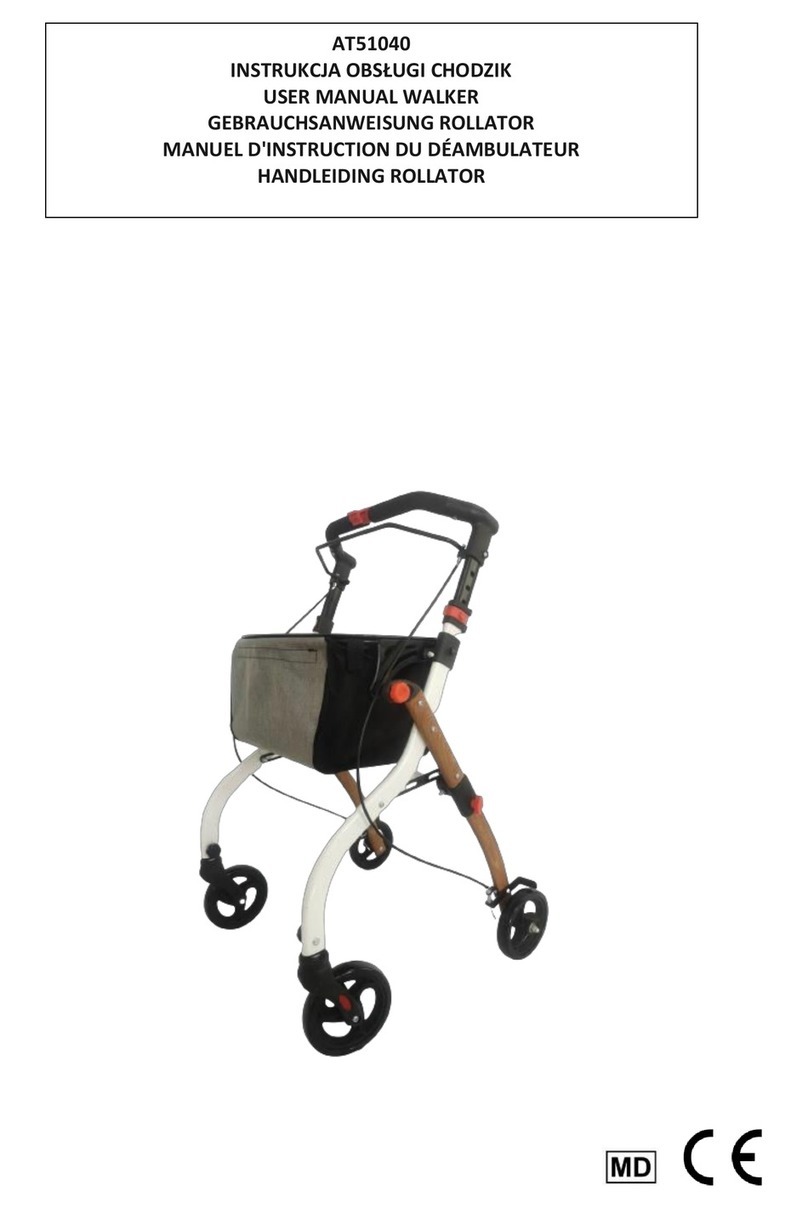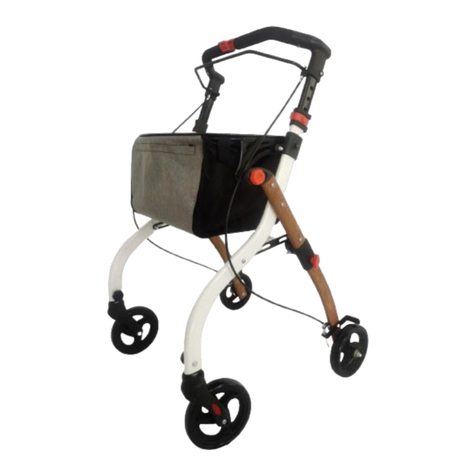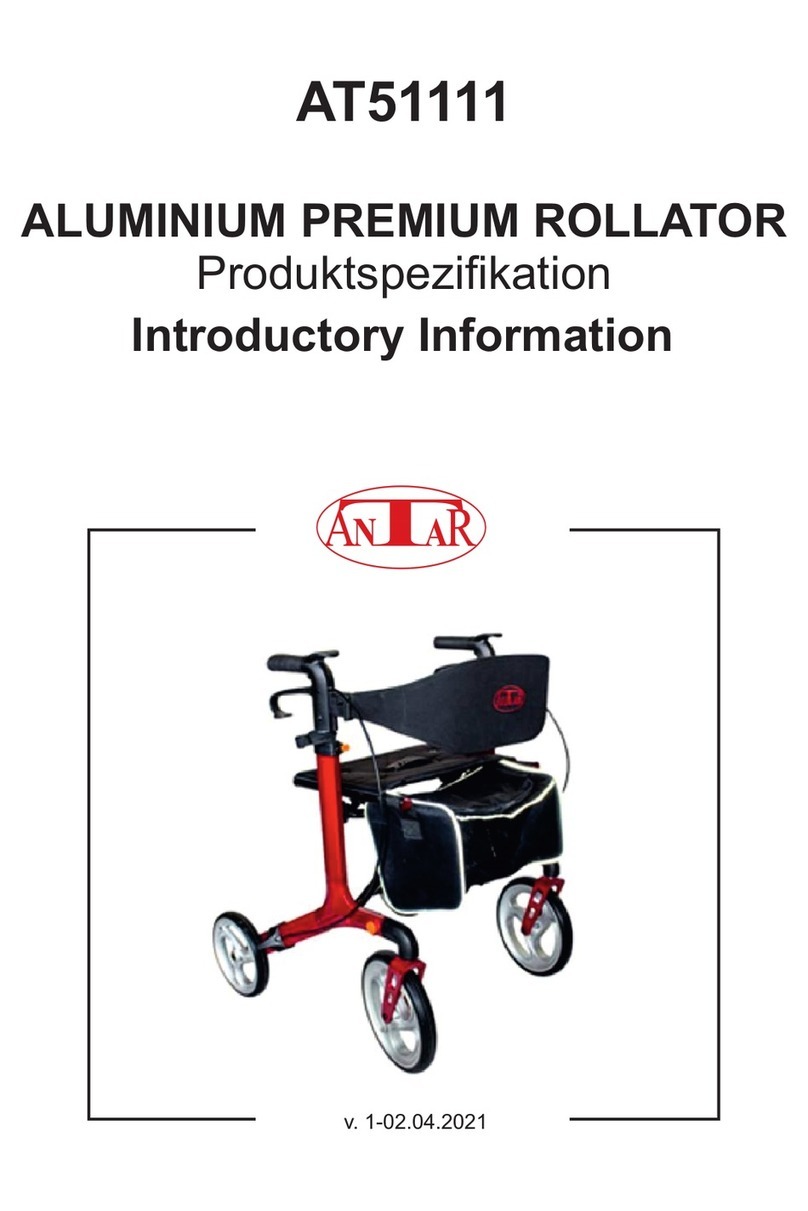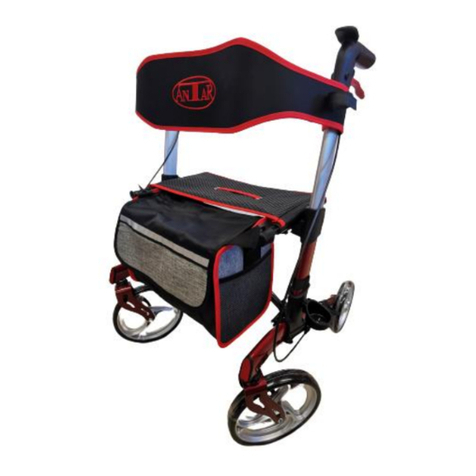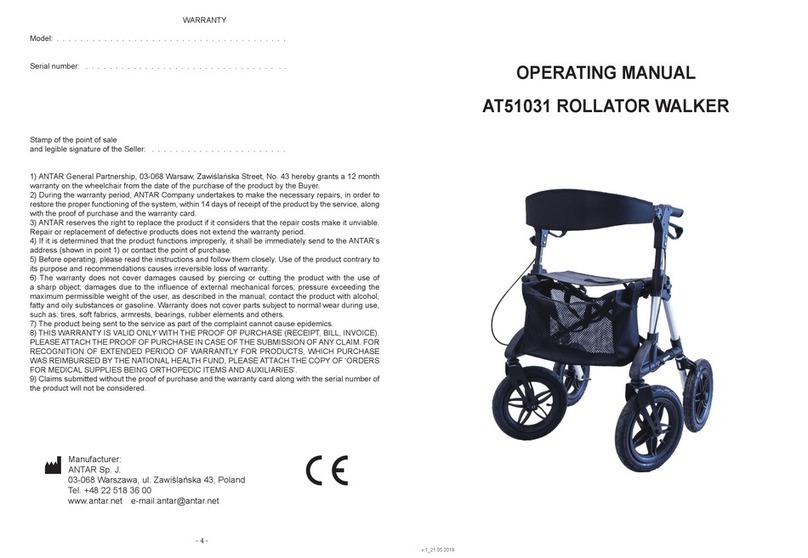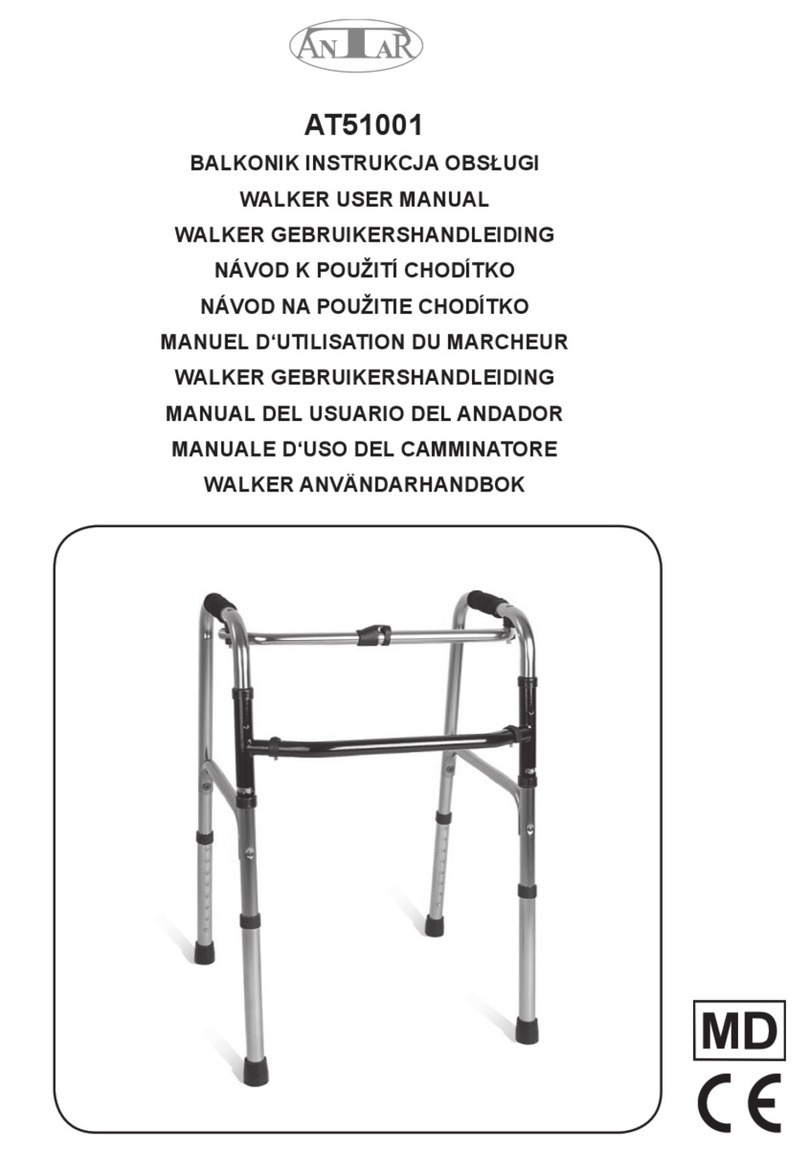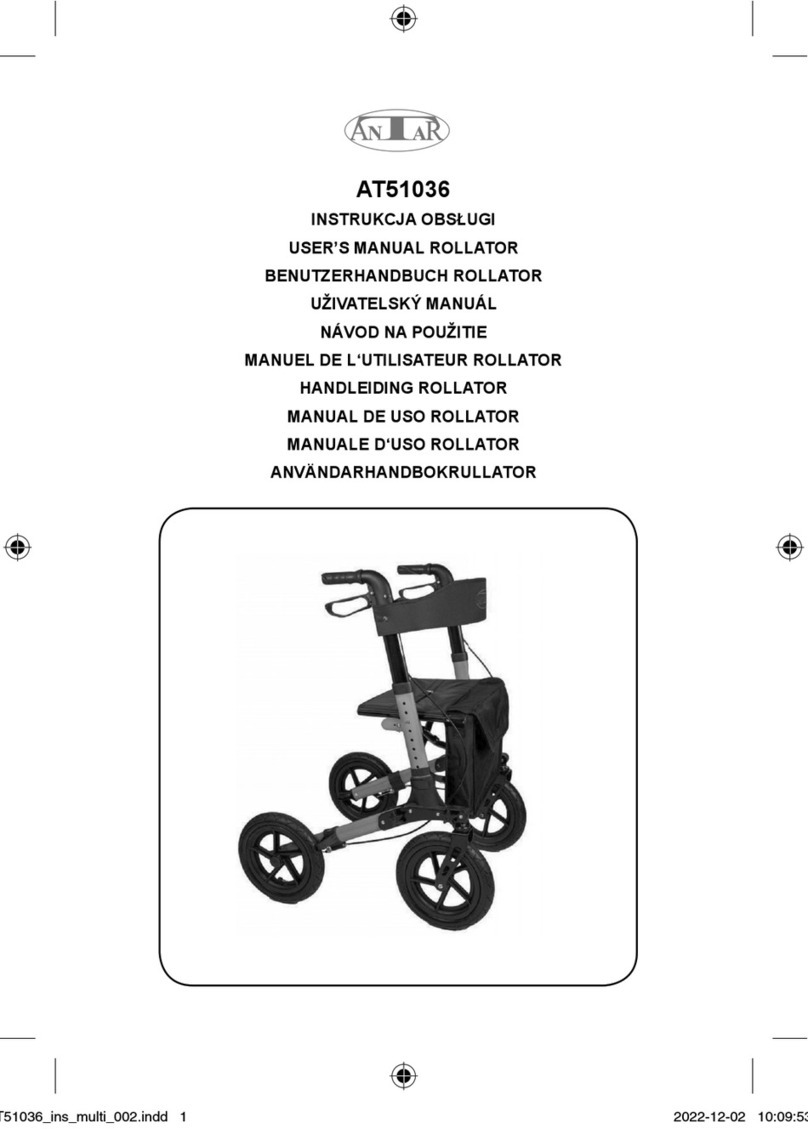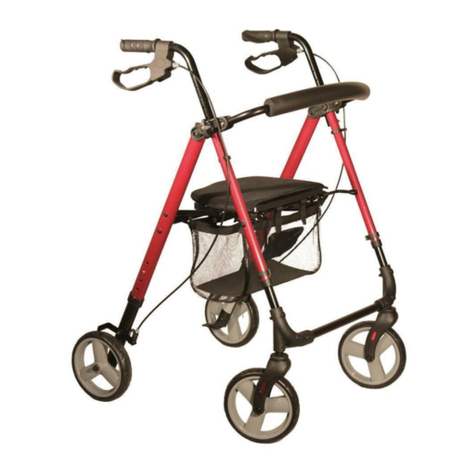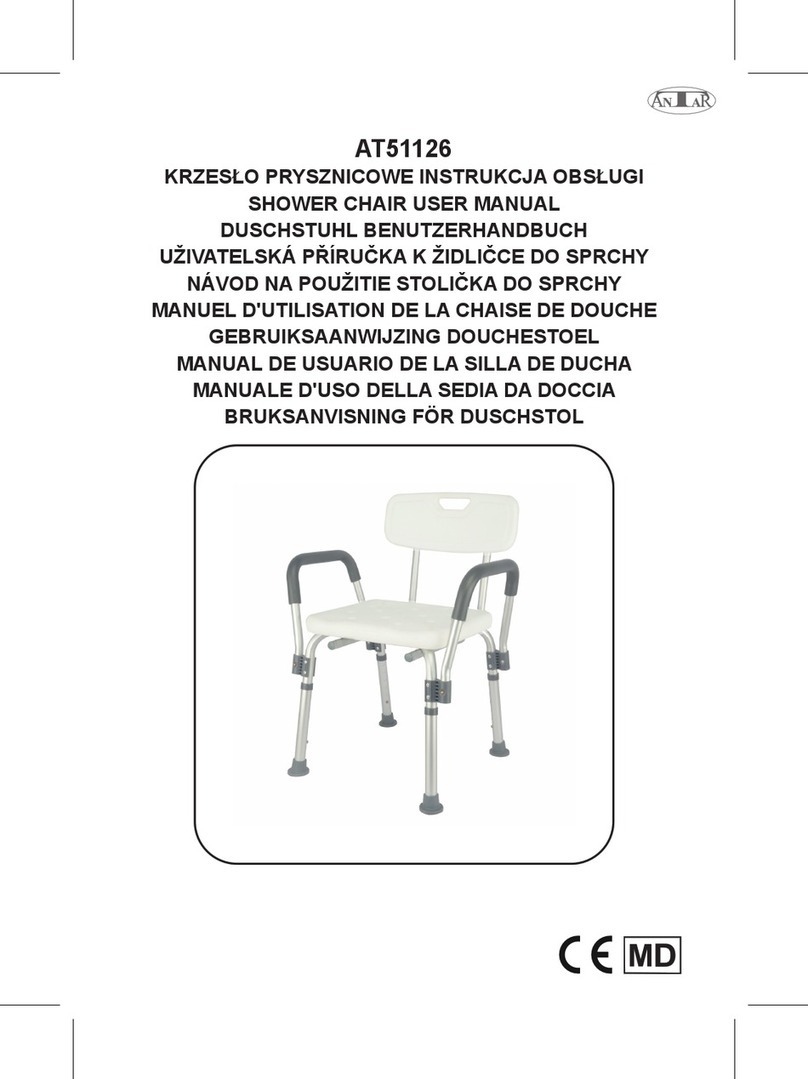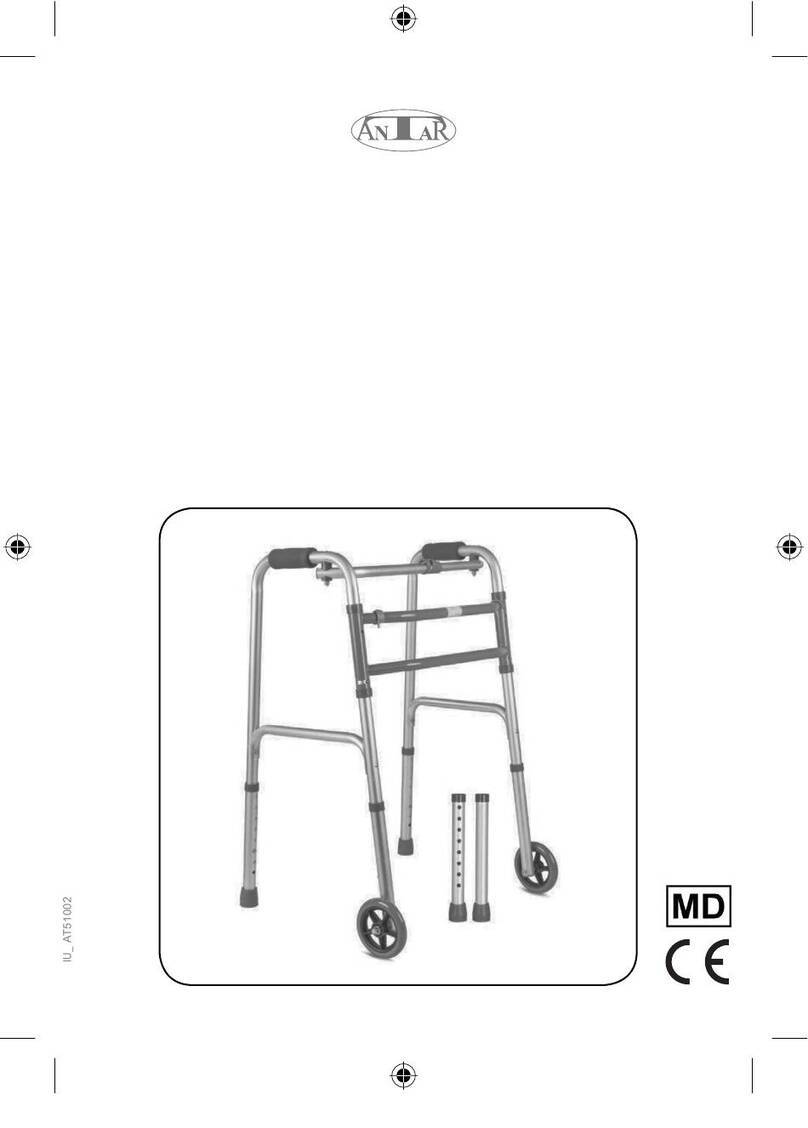
ANTAR Sp. J.
Adresse: ul. Zawiślańska 43
03-068 Warszawa,
TEL: +48 22 518 36 00
FAX: +48 22 518 36 30
E-mail: antar@antar.net
www.antar.net
Seriennummer:.........................................................................................................................
Kaufdatum:...............................................................................................................................
Garantieschein
Modell:......................................................................................................................................
und leserliche Unterschrift des Verkäufers:..............................................................................
Stempel der Verkaufsstelle
4. Falls Sie feststellen, dass das Produkt nicht ordnungsgemäß funktioniert, sollten Sie es unverzüglich an
die Adresse der Firme ANTAR (in Pkt. 1 angegeben) einsenden bzw. Ihre Verkaufsstelle kontaktieren.
3. ANTAR behält sich das Recht vor, das Produkt auszutauschen, falls angenommen werden muss, dass
eine Reparatur unrentabel wäre.
7. DIESES GARANTIEDOKUMENT IST NUR GÜLTIG IN VERBINDUNG MIT EINEM KAUFNACHWEIS
(KASSENBON ODER RECHNUNG), BITTE FÜGEN SIE BEI REKLAMATION DEN KAUFNACHWEIS
BEI. ZUR ANERKENNUNG DER VERLÄNGERTEN GARANTIEFRIST FÜR PRODUKTE, DEREN KAUF
VON DER KRANKENKASSE NFZ ERSTATTET WURDE, IST ES NOTWENDIG, EINE KOPIE DES
"AUFTRAGS FÜR DIE AUSSTATTUNG MIT MEDIZINPRODUKTEN, DIE ORTHOPÄDISCHE
GEGENSTÄNDE UND HILFSMITTEL SIND BEIZUFÜGEN."
8. Reklamationen ohne Kaufnachweis können nicht berücksichtigt werden.
2. Während der Garantiefrist verpflichtet sich ANTAR, die notwendigen Reparaturen auszuführen, um das
Produkt wieder funktionstüchtig zu machen, innerhalb von 14 Tagen ab Eingang des reklamierten
Produkts.
1. ANTAR Sp. J., 03-068 Warszawa, ul.Zawiślańska 43, gewährt hiermit auf das Produkt eine 12monatige
Garantie ab dem Tag der Übergabe des Produkts an den Käufer. Für Produkte, die von der polnischen
staatlichen Krankenkasse NFZ erstattet werden, gilt eine verlängerte Garantiefrist, die der Hälfte der
Nutzungsdauer entspricht, die in der Verordnung zu den garantierten Leistungen festgelegt ist, unter der
Bedingung, dass die Nutzungsdauer in der Verordnung in Monaten bzw. in Jahren festgelegt wurde.
6. Der Garantie unterliegen keine Beschädigungen infolge von Durchbohren bzw. Durchschneiden mit
einem scharfen Gegenstand, Beschädigung infolge mechanischer Kräfte von außen, infolge einer das in
der Bedienungsanleitung angegebene maximale Körpergewicht des Benutzers überschreitenden
Belastung, Kontakt mit fettigen bzw. öligen Substanzen, Benzin.
5. Vor lngebrauchnahme sollten Sie die Bedienungsanweisung lesen und sie genauestens einhalten.
Zweckentfremdete Benutzung des Produkts hat den Verlust der Garantie zur Folge.


